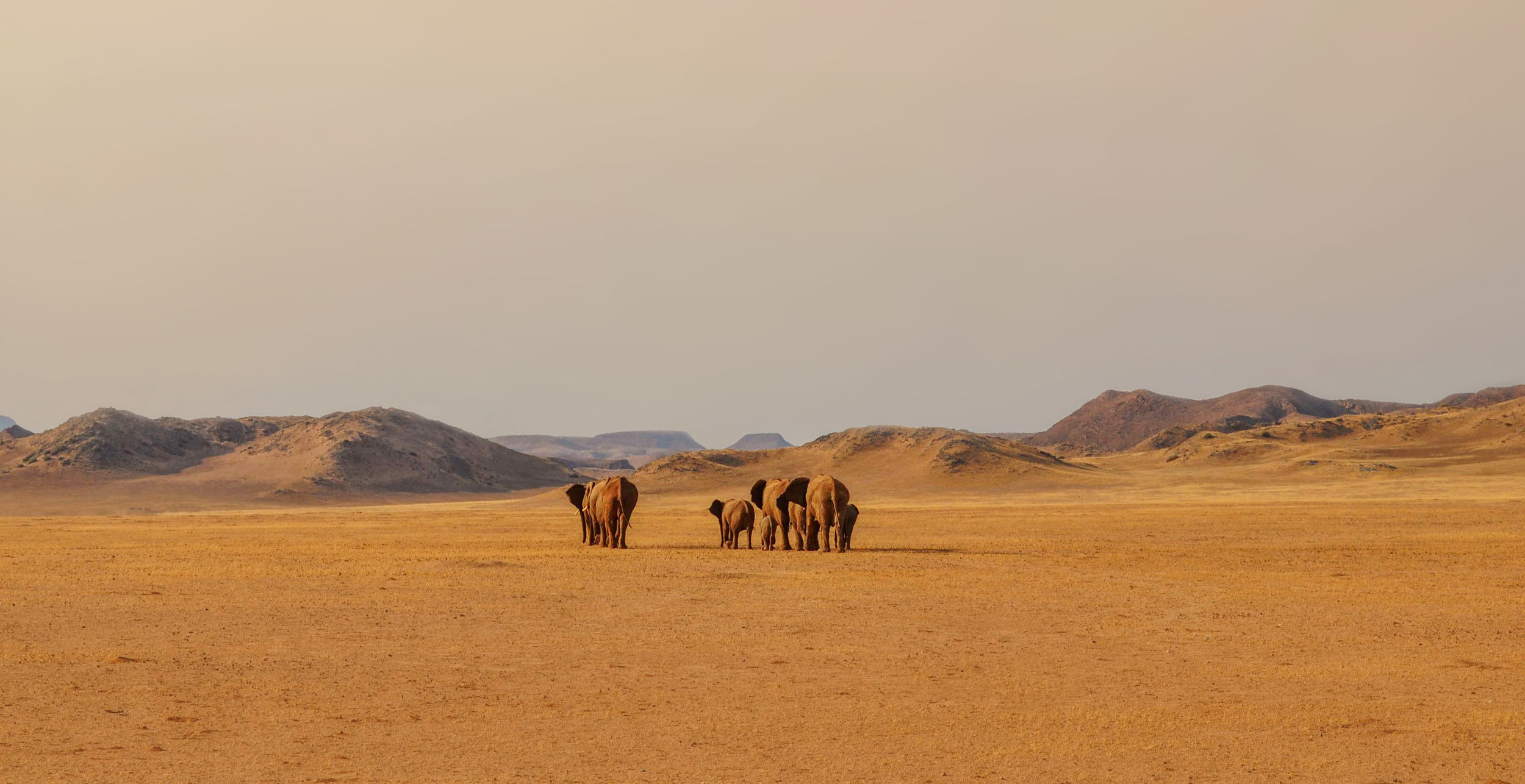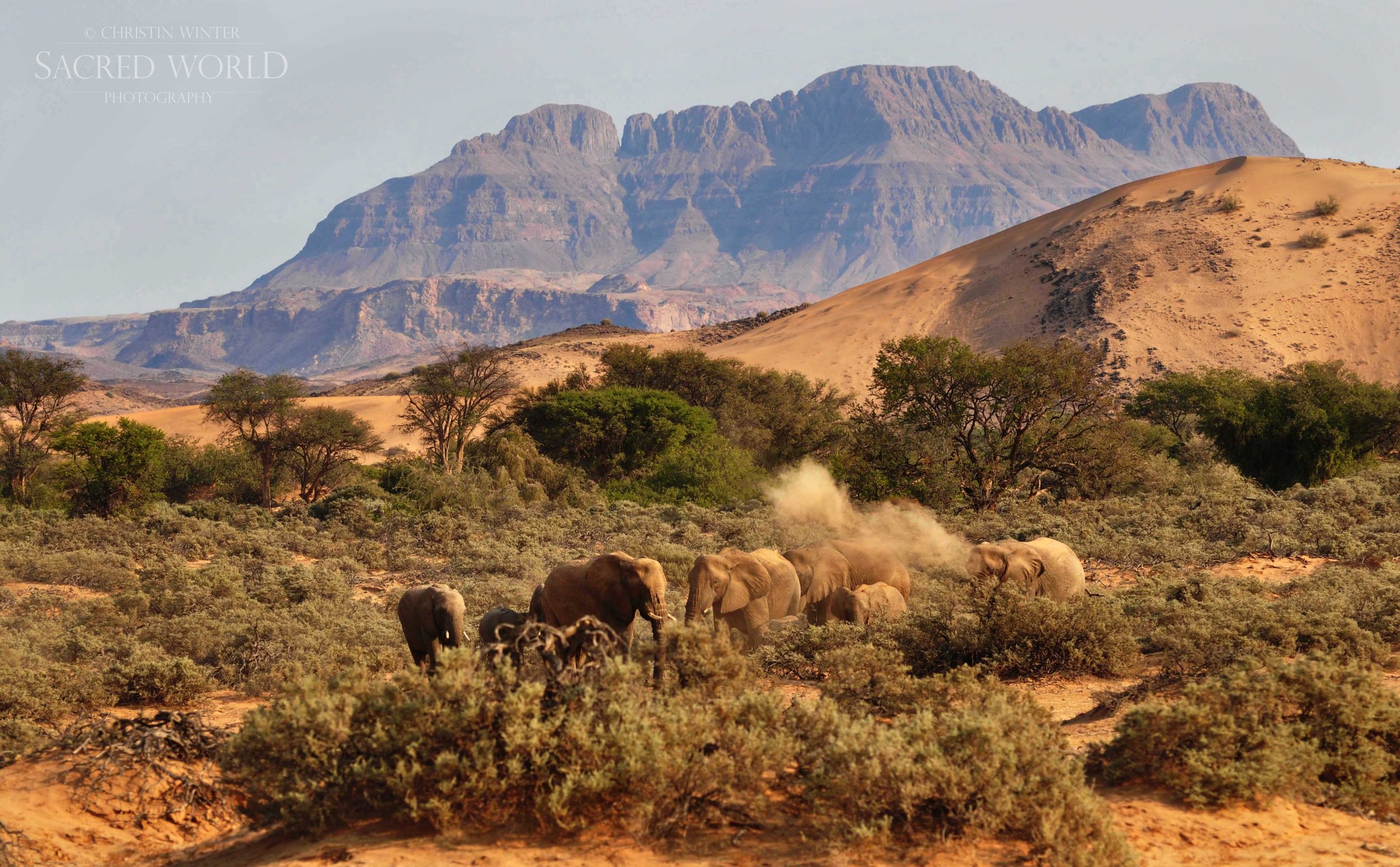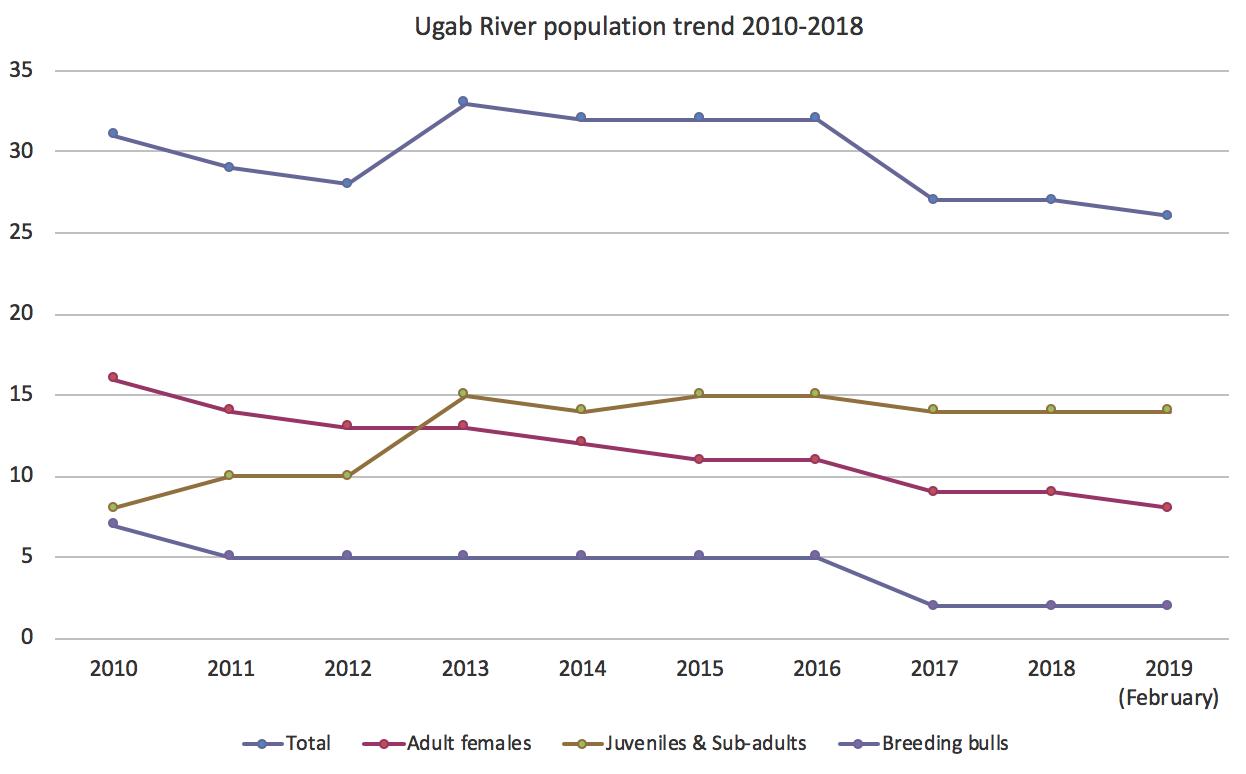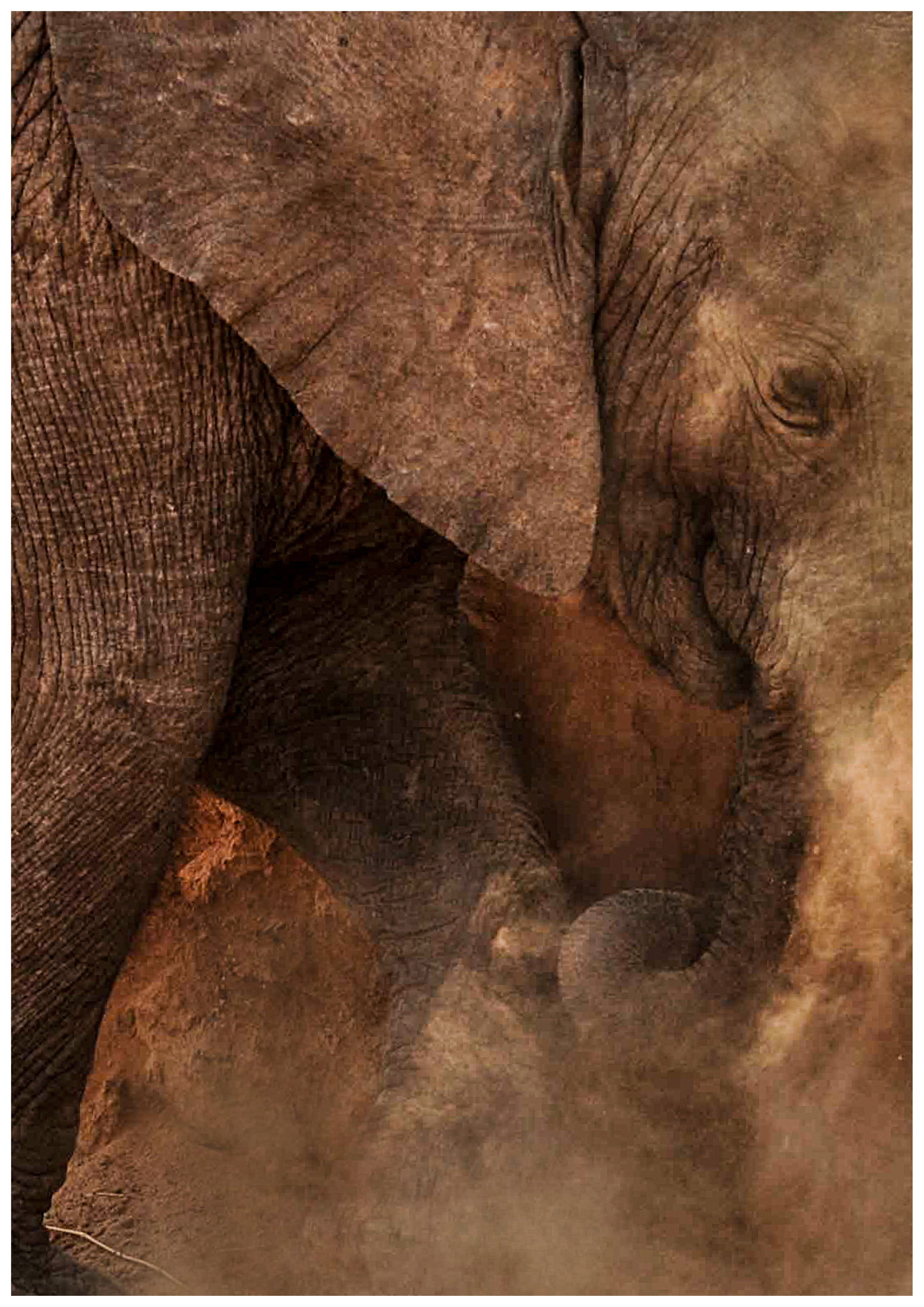Home > Desert Elephants > Desert Elephant Conservation
CONSERVATION OF NAMIBIA’S DESERT ELEPHANTS
Endangered subspecies
Desert elephants are a high national and international conservation priority and have been designated as a top priority for protection by the IUCN (International Union for the Conservation of Nature).
Only one other group of desert-dwelling elephants exist in the world, and they live in Mali, North Africa, where they were forced into their desert habitat by human population expansion. These elephants also belong to the species Loxodonta africana africana.
Decreasing populations
The total number of resident desert-adapted elephants living in the southern ephemeral rivers of the southern Kunene and northern Erongo region of Namibia is 62 elephants. Since 2016 the Ugab river elephant population has decreased by 32% partially due to natural and human-caused reasons. Between 2014-2018, 9 out of 14 new born calves died in the Huab River and the Ugab River combined, the causes are unknown. Human-caused stress factors and challenging environmental conditions definitely contribute to this.


The importance of desert elephants
With a current estimated 28.000 African elephants lost every year to poaching, human-elephant conflicts and habitat loss and a total number of 350.000 elephants left in the wild, conservation efforts should address specifically endangered subpopulations such as the desert-adapted elephants.
Namibia’s desert-adapted elephants form an essential part of Namibia’s biodiversity heritage, balance in the desert ecosystem and annual revenue through tourism for the country. The presence of elephants in the desert is vital to the local environment as elephants dig for water, making these resources available to other animals and their deep tracks in the mud during the short rainy season are said to provide an ideal environment for seedlings. In recent years these elephants have experienced a constant population decline.
Overhunting can have severe impacts on large mammal populations in extreme environments at low density, especially because desert elephants have a lower reproductive rate than other savannah elephants (Leggett et al. 2011). Since 1975-2016 this subpopulation has experienced a decline of 73% (Ramey and Brown 2016, Desert Elephant Conservation) and by 1980 poaching had already resulted in the extirpation of the northernmost desert subpopulation, inhabiting the Kunene River mouth and Marienflus valley.

Human-Elephant Conflicts
Human-elephant conflicts, poaching and hunting have a severe impact on the health and survival of the desert elephant subpopulation of Namibia. If desert elephants were extirpated, they might not readily be replaced by other Savannah elephants that had not learned the behaviour needed for desert survival. If no action will take place to prevent further human-caused mortalities of these desert-adapted elephants, their fate will be local extinction.
Problem elephants
If many complaints are received, the Ministry of Environment and Tourism (MET) may declare an elephant as a ‘problem animal’ and issue a hunting permit. A hunter pays for the privilege of shooting the elephant, the local community then receive money to help offset the cost of damages caused by the elephant, as well as its meat. This is currently one of the few ways people benefit from living with elephants in their vicinity.
Lost knowledge
While elephants were absent from the southern reaches of the Kunene region, people forgot they had once roamed the area. When elephants returned it caused havoc for people who had to share their water; and other resources with these giants that require lots of space, water and food. Elephants can be very destructive and can easily break water pumps and infrastructure, which can leave people and their livestock without access to water. Over the years when the elephants were absent from the area, knowledge on how to live side by side was lost. EHRA aims to empower people with this knowledge so they can once again live in peace with the desert elephants.


OUR CONSERVATION PROGRAMMES
Elephant Human Relations Aid (EHRA) exists for the conservation of Namibia’s desert-elephants by helping people live safely and without fear of their large neighbors. EHRA’s programs provide practical and realistic solutions to people living with the elephants.
Waterpoint protection
Our elephant conservation volunteer project works directly with local communities to protect vulnerable structures from damage with walls which allow the elephants to drink but prevent access to windmills, tanks or pumps.
Community education
Through educational PEACE workshops people of all age groups and social backgrounds learn and experience the true nature of elephants, which decreases their fears and changes unfounded beliefs and attitudes.
Research
Accurate data on elephant numbers and movements, the ability to identify each elephant, and knowledge of individual elephant personalities are paramount to effective conservation management in Africa.











